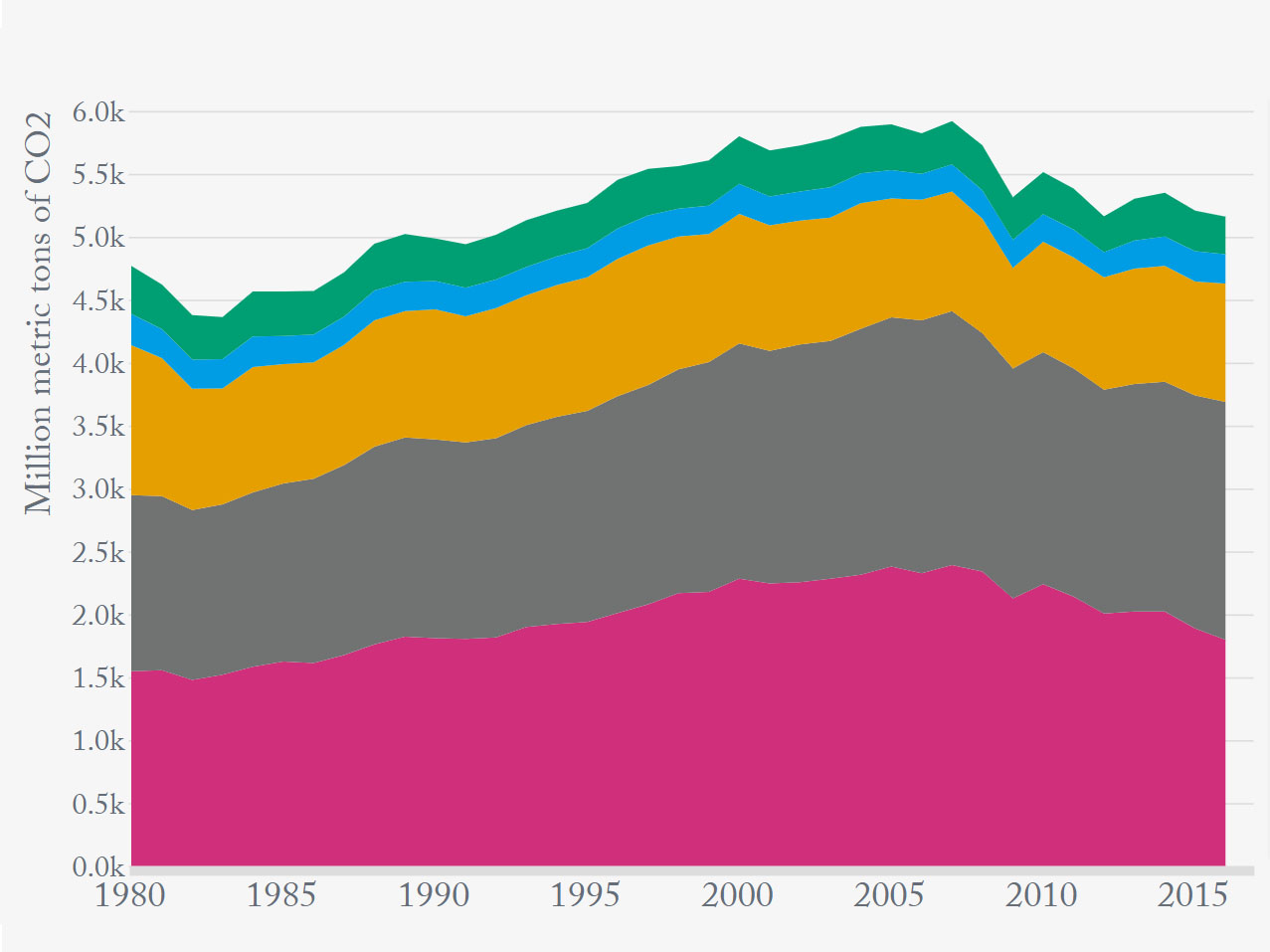Environment
How energy independent is the United States? A look at oil imports, exports and production

The third-annual State of the Earth is back to help American evaluate the conditions of the nation's land, water, and air. Here are some of the top findings from the report.
1. Seventy-nine percent of US energy comes from fossil fuels. The share of energy consumption from nuclear and renewable sources has more than doubled since 1980.
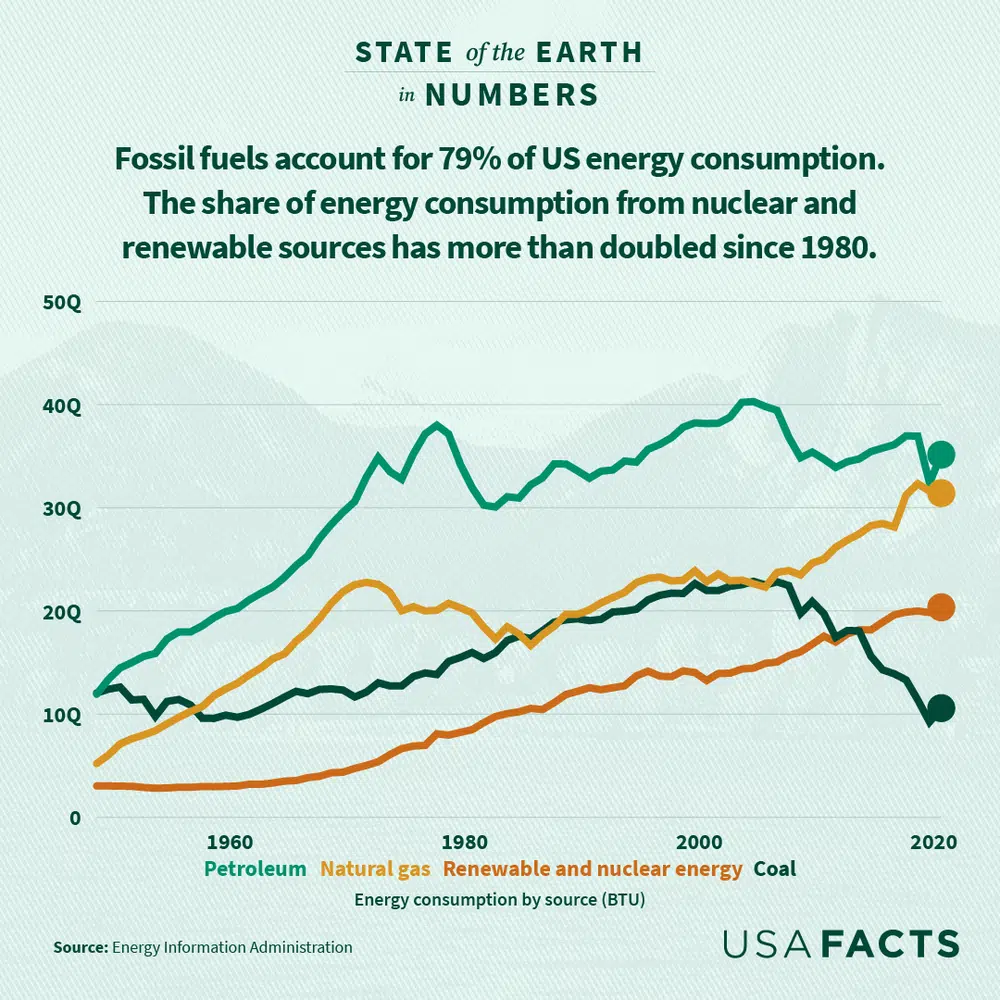
Coal provided 11% of the nation’s energy last year, down from about 20% of energy consumption in 1980. Natural gas, a growing fossil fuel energy source, was 32% of energy consumption in 2021. Natural gas produces half as much carbon dioxide per unit of energy as coal.
Meanwhile, the number of renewable energy jobs is growing, while fossil fuel jobs are declining.
2. In 2019, the US was fifth among the world’s 10 largest economies for its proportion of energy consumption (20%) coming from renewable and nuclear energy.
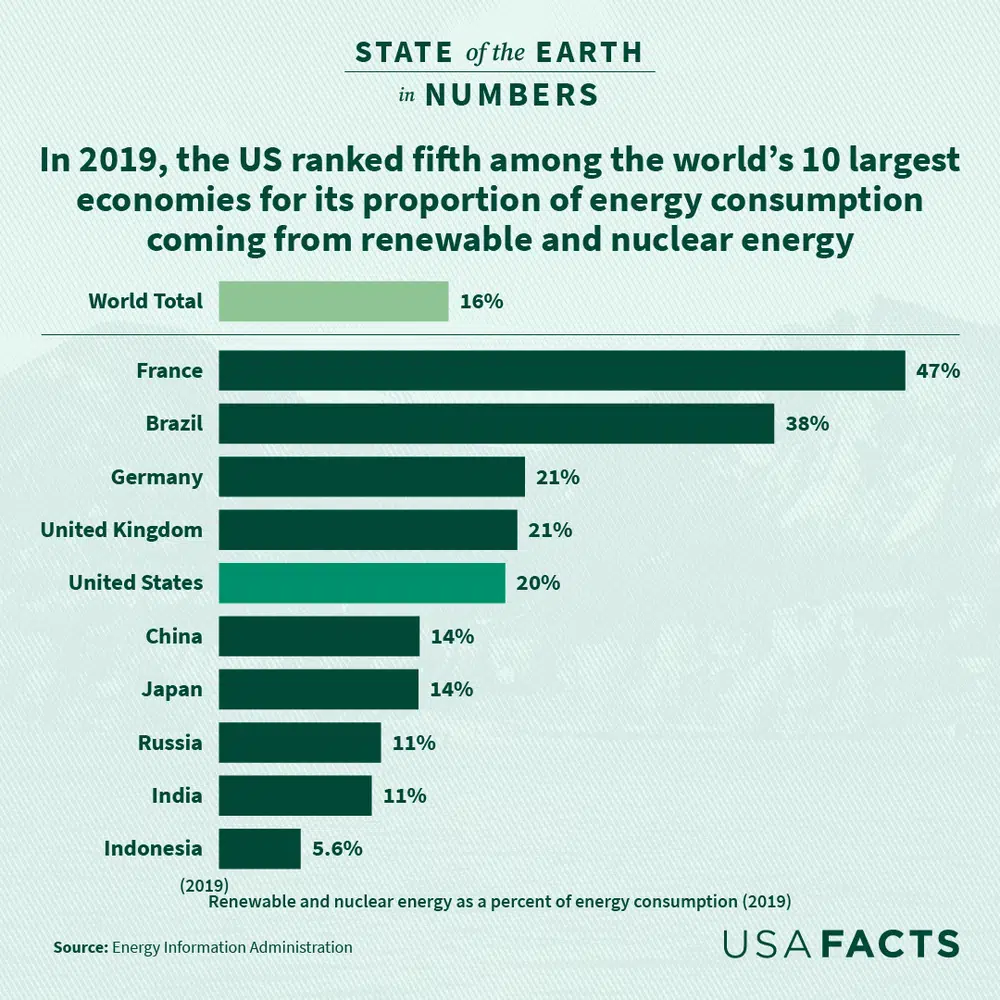
France was the top country in this category, with renewable and nuclear energy accounting for 47% of its energy consumption. These sources were more than half of the energy consumed by 11 countries, including Bhutan (84%), Iceland (79%), and Paraguay (74%), but they do not rank among the world’s 10 largest economies.
3. Transportation was the largest source of US emissions for 2020. It surpassed electricity generation emissions in 2017.
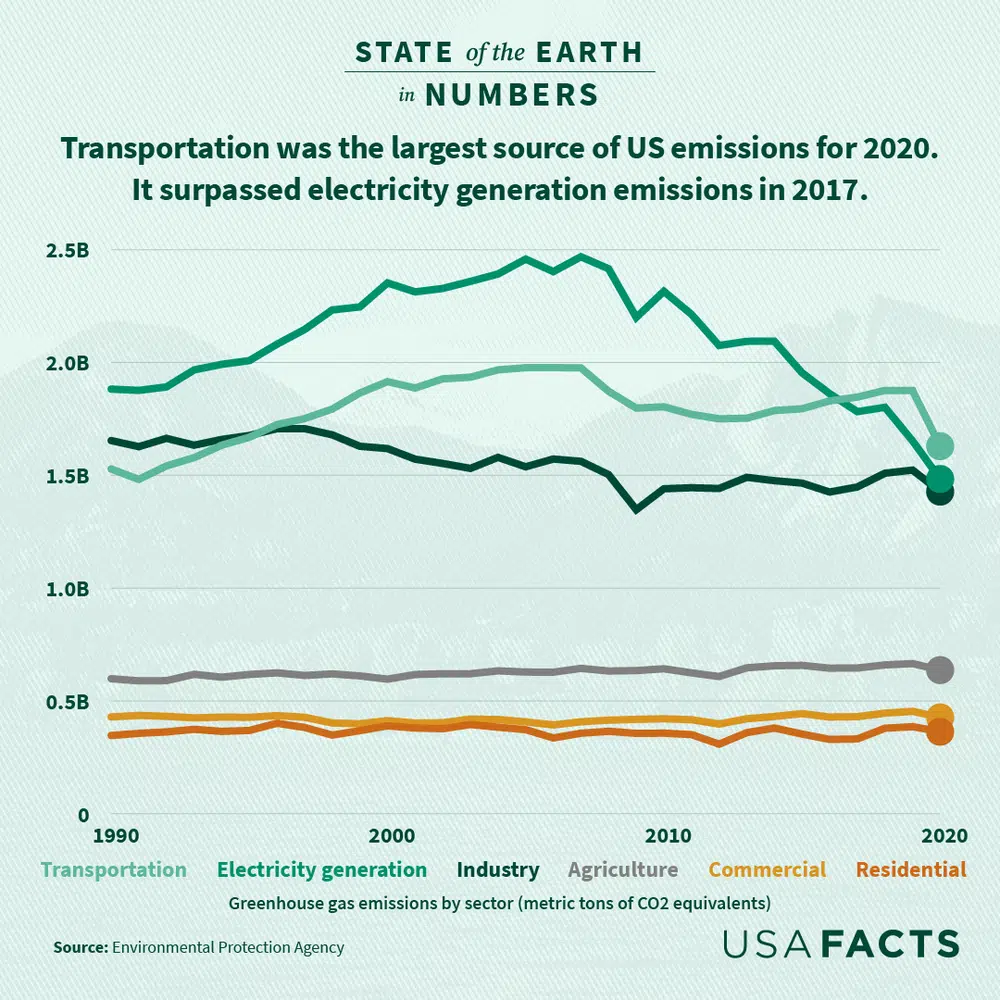
Transportation and electricity generation almost entirely contribute to emissions through fossil fuel combustion that produces carbon dioxide. Industrial activity contributes to emissions in various ways, including fossil fuel combustion, natural gas, chemical production, and fluorinated gases.
4. The average American generated 4.9 pounds of solid trash (food waste, paper, etc.) daily in 2018, up from 3.7 pounds in 1980.
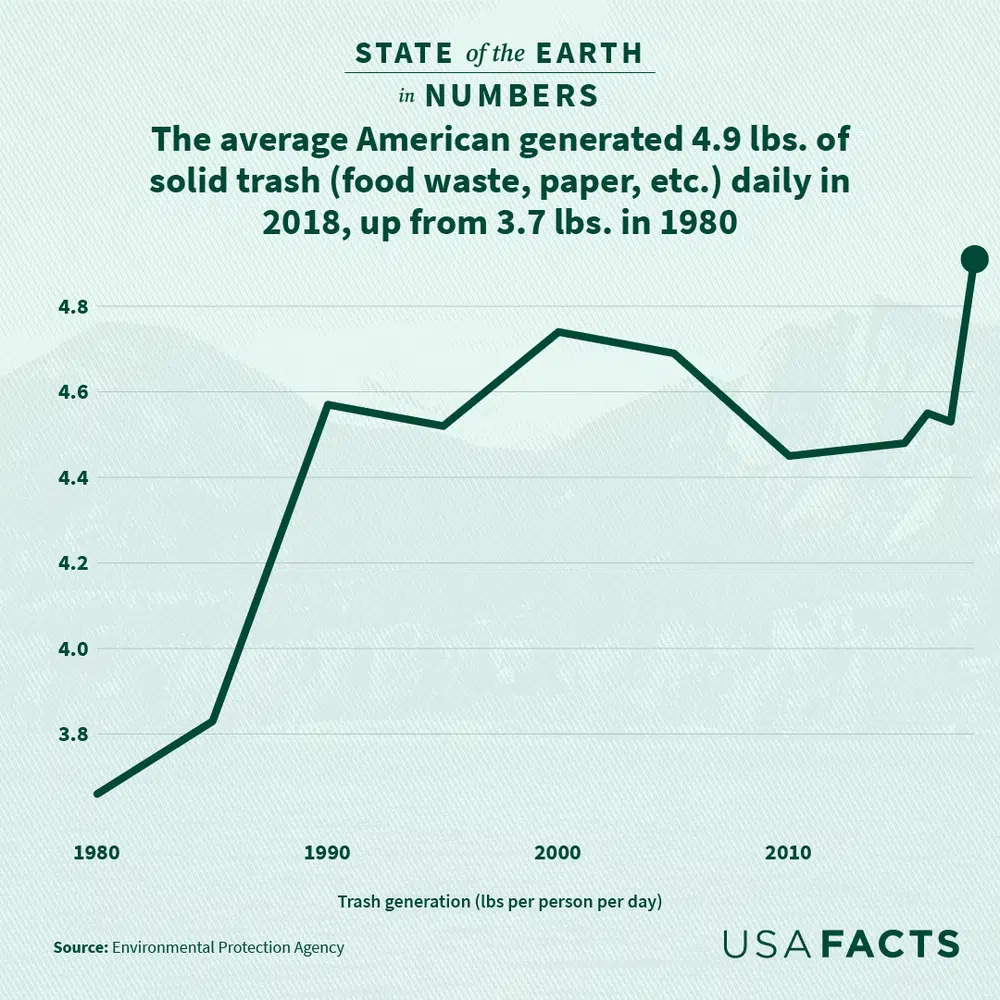
However, according to the Environmental Protection Agency, people also recycled or composted more waste, up from 9.6% in 1980 to 32.1% in 2018 (the most recent year data is available). This is down from 35% of recycled or composted waste in 2017.
5. Last year, all states, particularly in the Northeast and upper Midwest, were warmer than the 20th-century average.
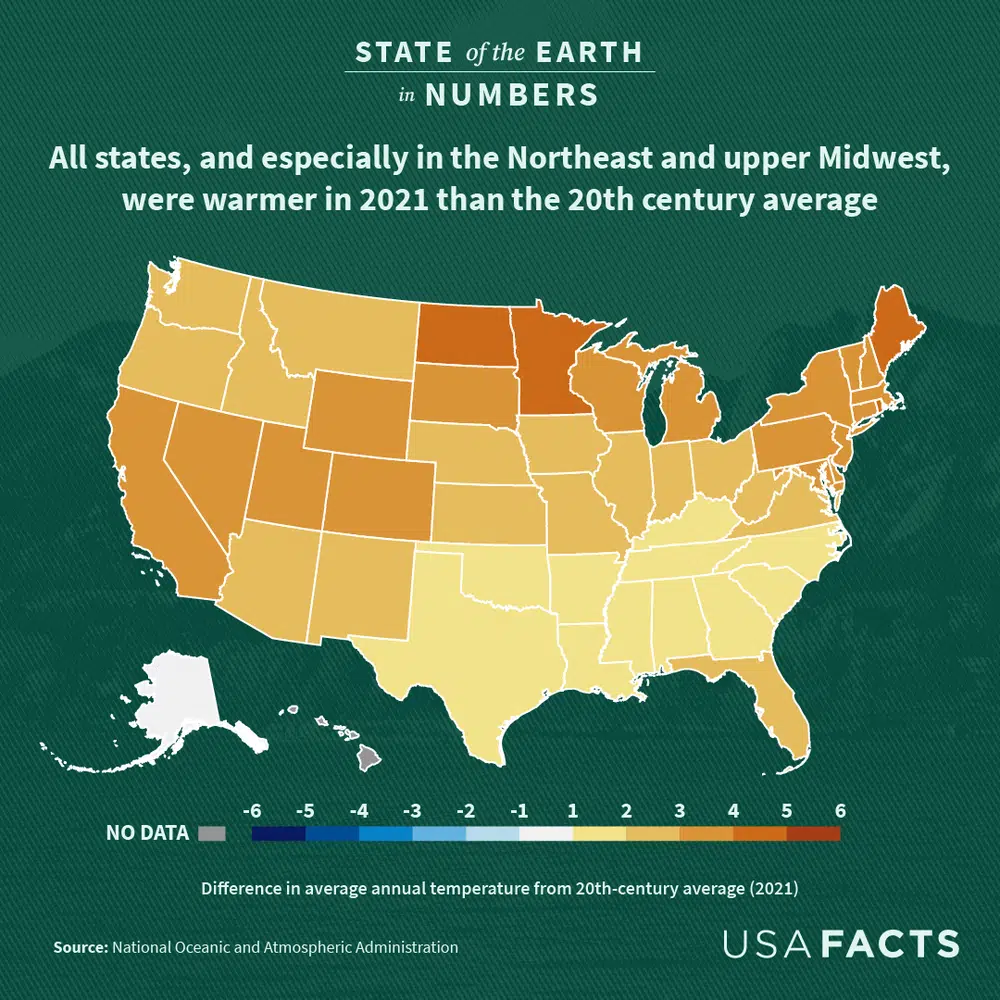
Minnesota had the biggest difference: its average annual temperature was 4.2 F° above its 20th-century average. Maine and North Dakota’s averages were 4.1 F° higher. (Data for Hawaii was unavailable.)
6. Average US rainfall for the last decade is 3.6% higher than the average rainfall for the previous decade.
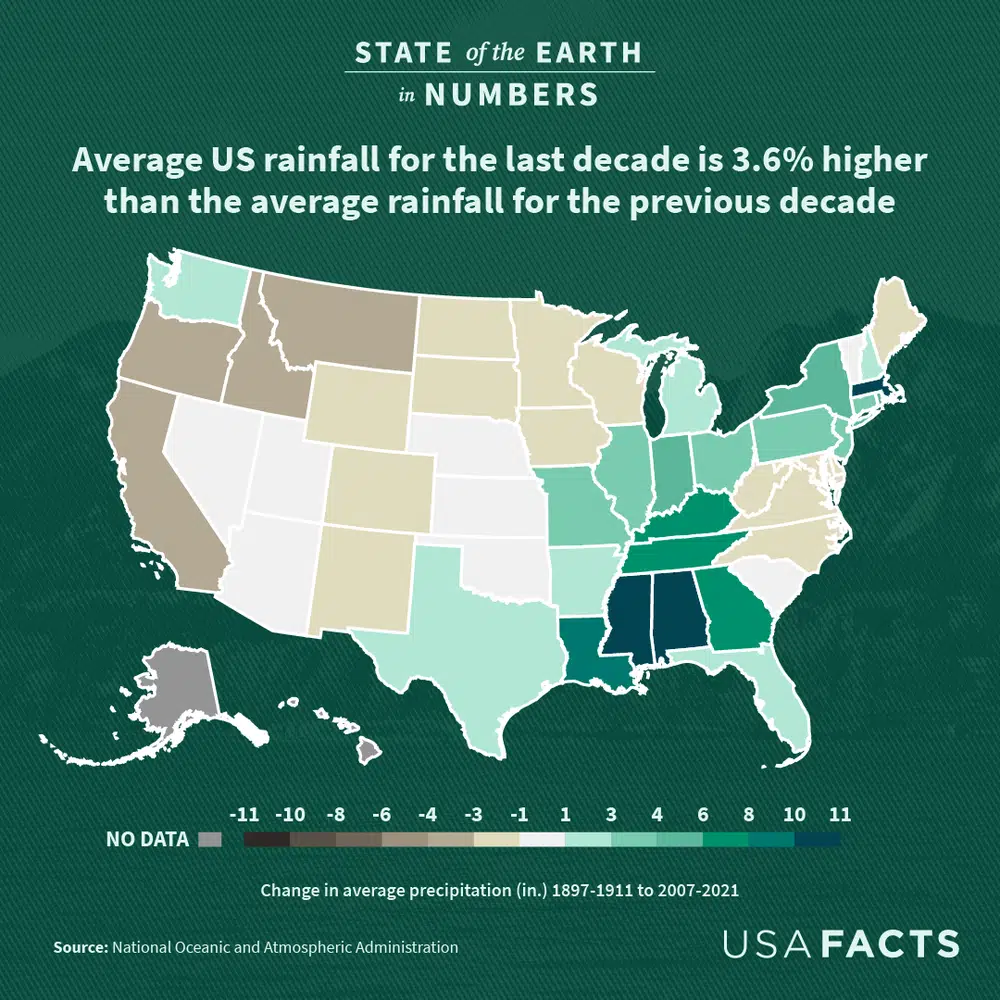
On a state level, Mississippi and Massachusetts had 10+ inches of precipitation above their 20th-century averages. Meanwhile, Montana and Oregon had the largest drops in average annual precipitation.
7. 2021 was the sixth-warmest year on record.
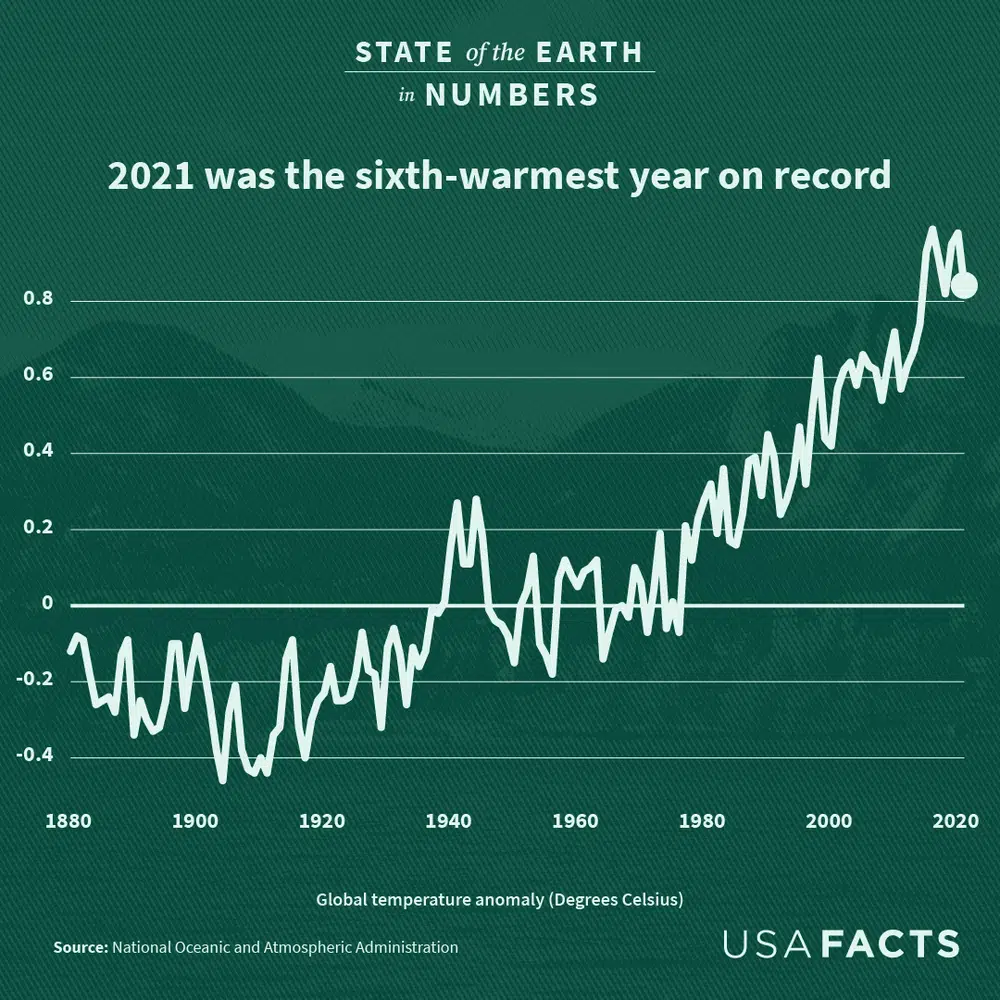
The average global temperature was 1.51 °F above the 20th-century average, according to the National Oceanic and Atmospheric Administration (NOAA). And while last year was colder than 2016 — the hottest year on record — it was warmer than any recorded year before 2015.
8. From new laws to executive orders and presidential memoranda to executive agency rules, there were 81 federal actions on land, energy, and the environment in 2021.
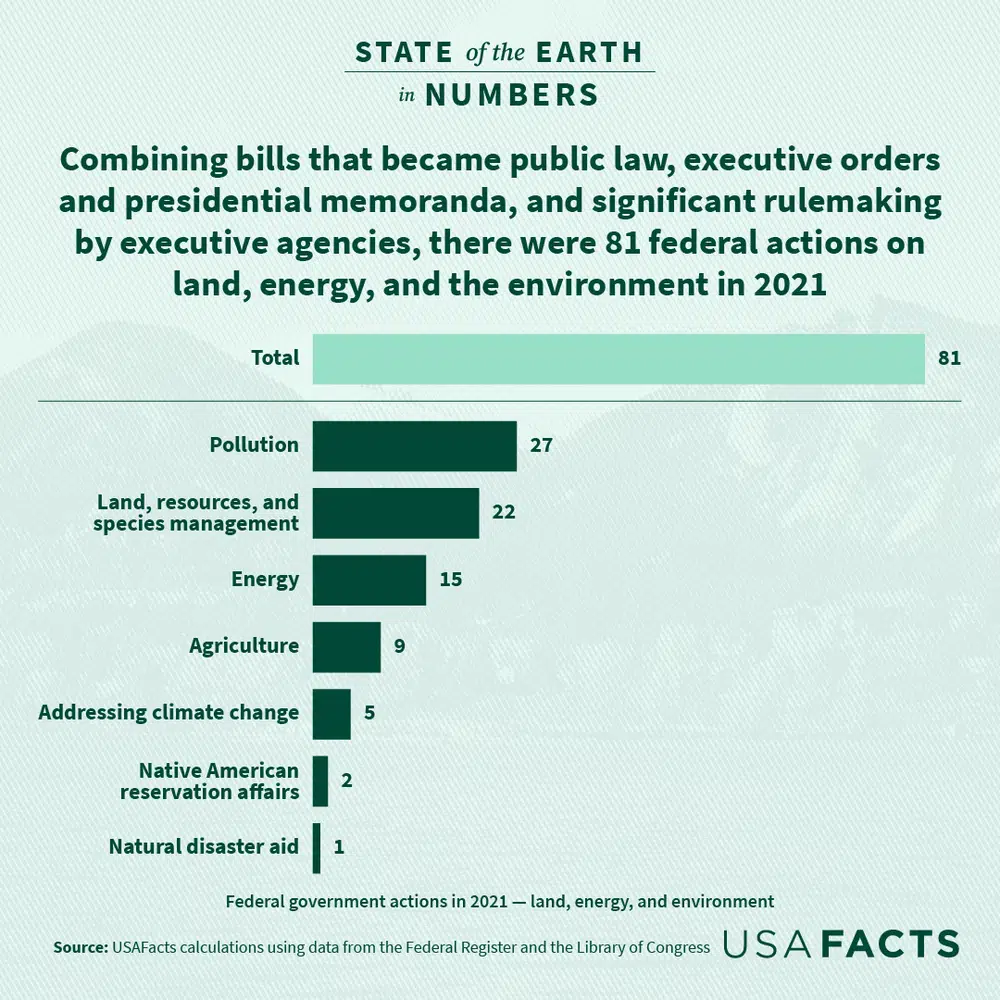
One law nullified a 2020 EPA rule that removed some emissions regulations on the oil and natural gas sector. Fourteen actions regulated the use of hazardous materials, while 15 established rules on how humans interact with animals.
9. The federal government spent $40.9 billion in 2020, or 0.6% of all federal expenditures, on the environment and natural resources (not including spending on renewable energy).
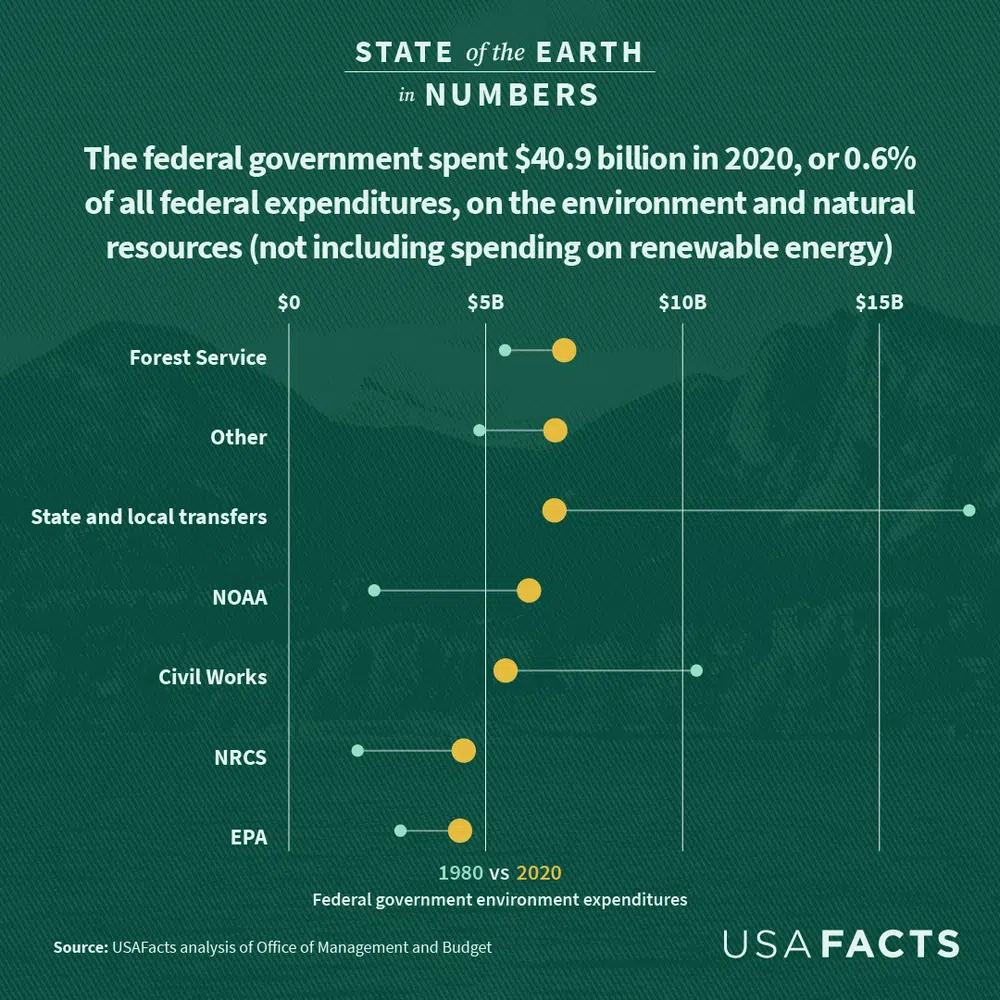
Most was spent on the Forest Service ($7 billion), transfers to state and local governments ($6.7 billion), and NOAA ($6.1 billion). Several spending categories increased, except for transfers to states and local governments and the Corps of Engineers. Track the spending over four decades.
10. The federal government collected $11.3 billion in revenue from energy and minerals extracted from its lands and waters in fiscal year 2021, a 19% drop from 2011 (adjusting for inflation).
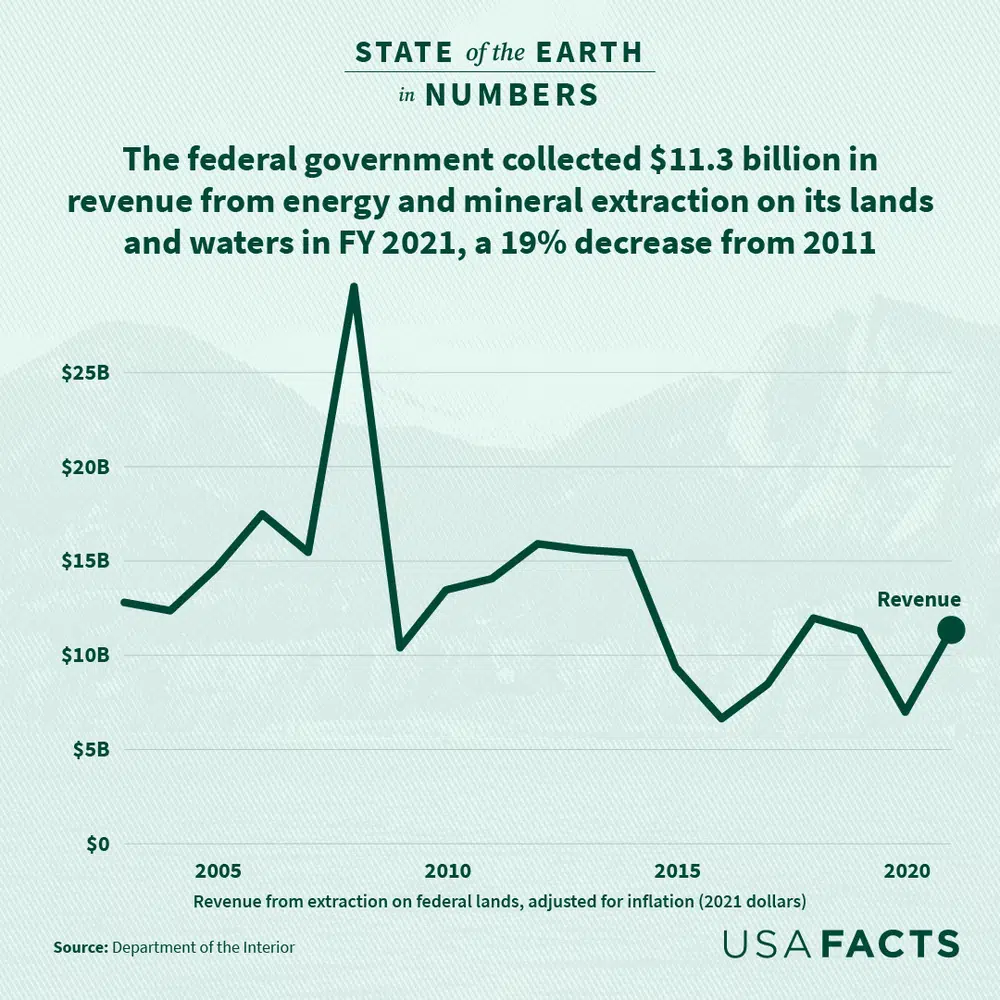
Acreage leased for oil and gas extraction decreased to 24.9 million acres, or 35%, since fiscal year 2011. However, the number of oil- and gas-producing leases in the US rose 5% since fiscal year 2011.
See more environmental metrics from the government in the State of the Earth report and USAFacts' environment articles.
Environment
Environment
Environment
Environment
Newsletter
Keep up with the latest data and most popular content.
